
Fancy Bear Goes Phishing: The Dark History of the Information Age, in Five Extraordinary Hacks
by
Scott J. Shapiro
Moreover, the court orders in this case are currently “under seal,” meaning that they are secret. Just like hackers, FBI agents hide their tracks. But from public reporting we know that Peterson’s team got its break in the usual way—from a Mirai victim. The September 25 barrage on Brian Krebs’s blog enabled Google to record the location of every bot that had attacked it. Brian Krebs gave Google permission to share the location information with the FBI. With this information, the Anchorage cyber squad found the IP addresses of Mirai-infected devices in Alaska. To locate these devices, however, the agents needed more than IP addresses.
…
another assault on Rutgers: Katie Park, “Rutgers Network Crumples Under Siege by DDoS Attack,” The Daily Targum, March 30, 2015, https://dailytargum.com/article/2015/03/rutgers-network-crumples-under-siege-by-ddos-attack. a friend later reported: Brian Krebs, “Who Is Anna-Senpai, the Mirai Worm Author?,” Krebs on Security, January 18, 2017, krebsonsecurity.com/2017/01/who-is-anna-senpai-the-mirai-worm-author. conceal his identity: The post is here: “@Rutgers Community,” Pastebin, April 29, 2015, pastebin.com/9d0vRep8. Brian Krebs connected the post to Paras. See Krebs, “Who Is Anna-Senpai?” fourth attack on the Rutgers: Kelly Heyboer, “Who Hacked Rutgers: University Spending up to $3M to Stop Next Cyber Attack,” NJ.Com, August 23, 2015, https://www.nj.com/education/2015/08/who_hacked_rutgers_university_spending_up_to_3m_to.html.
…
Here’s What That Means,” The Washington Post, August 27, 2013. distributed zombie computers: Ellen Messmer, “Experts Link Flood of ‘Canadian Pharmacy’ Spam to Russian Botnet Criminals,” The New York Times, July 16, 2009. over three years: Brian Krebs, “Top Spam Botnet, ‘Grum,’ Unplugged,” Krebs on Security, July 19, 2012, krebsonsecurity.com/2012/07/top-spam-botnet-grum-unplugged; Brian Krebs, “Who’s Behind the World’s Largest Spam Botnet?,” Krebs on Security, February 1, 2012, http://krebsonsecurity.com/2012/02/whos-behind-the-worlds-largest-spam-botnet. issuing orders: Two main kinds of botnets are Server-Client, where the botmaster directly controls the bots through a C2, and Peer-to-Peer, where the botmaster uses the bots themselves to relay orders.

Future Crimes: Everything Is Connected, Everyone Is Vulnerable and What We Can Do About It
by
Marc Goodman
Published 24 Feb 2015
Deep Web Harvesting,” BrightPlanet, July 31, 2013. 15 Whereas Silk Road: Andy Greenberg, “Inside the ‘DarkMarket’ Prototype, a Silk Road the FBI Can Never Seize,” Wired, April 24, 2014. 202 To that end, in mid-2014: Kim Zetter, “New ‘Google’ for the Dark Web Makes Buying Dope and Guns Easy,” Wired, April 17, 2014. 16 Certain criminal forums: Michael Riley, “Stolen Credit Cards Go for $3.50 at Amazon-Like Online Bazaar,” Bloomberg, Dec. 19, 2011. 17 Numerous illicit “torrents”: Ernesto, May 18, 2008, blog on TorrentFreak, accessed on June 27, 2014. 18 Another such site: “Inside the Mansion—and Mind—of Kim Dotcom, the Most Wanted Man on the Net,” Wired, Oct. 18, 2012. 19 Not only do they sell: Beth Stebner, “The Most Dangerous Drug in the World: ‘Devil’s Breath’ Chemical from Colombia Can Block Free Will, Wipe Memory, and Even Kill,” Mail Online, May 12, 2012. 20 Tor hidden sites: Forward-Looking Threat Research Team, “Deepweb and Cybercrime,” Trend Micro, 2013, 16. 21 Once stolen: Brian Krebs, “Peek Inside a Professional Carding Shop,” Krebs on Security, June 4, 2014. 22 Given the vast amounts: Max Goncharov, “Russian Underground Revisited,” Forward-Looking Threat Research Team, Trend Micro Research Paper. 23 The cards are sold: Brian Krebs, “Cards Stolen in Target Breach Flood Underground Markets,” Krebs on Security, Dec. 20, 2013; Dancho Danchev, “Exposing the Market for Stolen Credit Cards Data,” Dancho Danchev’s Blog, Oct. 31, 2011; “Meet the Hackers,” Bloomberg Businessweek, May 28, 2006; David S.
…
Millman, “Cybercriminals Work in a Sophisticated Market Structure,” Wall Street Journal, June 27, 2013. 79 Worse, it was the tool of choice: Dana Liebelson, “All About Blackshades, the Malware That Lets Hackers Watch You Through Your Webcam,” Mother Jones, May 21, 2014. 80 So good was the Blackshades RAT: “Syrian Activists Targeted with BlackShades Spy Software,” The Citizen Lab, June 19, 2012. 81 The rewards, however: Gregg Keizer, “Google to Pay Bounties for Chrome Browser Bugs,” Computerworld, Jan. 29, 2010. 82 Not to be outdone: Brian Krebs, “Meet Paunch: The Accused Author of the BlackHole Exploit Kit,” Krebs on Security, Dec. 6, 2013. 83 Dark Net chat rooms: Nicole Perlroth and David E. Sanger, “Nations Buying as Hackers Sell Flaws in Computer Code,” New York Times, July 13, 2013. 84 In 2012, the Grugq sold: Andy Greenberg, “Shopping for Zero-Days: A Price List For Hackers’ Secret Software Exploits,” Forbes, March 23, 2012. 85 Companies such as Vupen: Brian Krebs, “How Many Zero-Days Hit You Today,” Krebs on Security, Dec. 13, 2013. 86 The result, as pointed out: Josh Sanburn, “How Exactly Do Cyber Criminals Steal $78 Million?
…
Armed with all the details they needed, the hackers burrowed like rats through a multitude of interconnected networks until they arrived at the company’s internal server responsible for controlling the tens of thousands of individual point-of-sale terminals where customers swipe their credit cards at the register. Once there, attackers installed malware known as Trojan.POSRAM, which copied all the card swipes taking place throughout Target stores nationwide and secretly exfiltrated the data to Russia, a breathtaking fraud that continued until the story was broken by the security researcher Brian Krebs. No doubt the Target attack is the highest-profile penetration of an HVAC system to date, but it is not the only one. We might like to believe that the government could do a better job in protecting its buildings from remote attacks, but evidence does not seem to suggest that is the case, even at those facilities one might expect to be among the most secure.
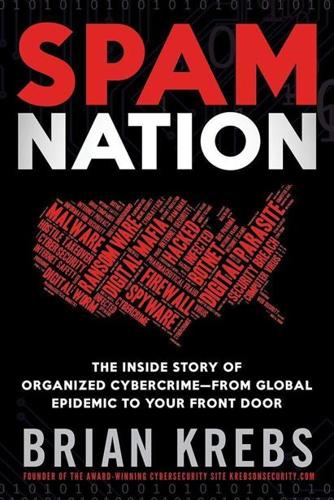
Spam Nation: The Inside Story of Organized Cybercrime-From Global Epidemic to Your Front Door
by
Brian Krebs
Published 18 Nov 2014
At Sourcebooks we believe one thing: BOOKS CHANGE LIVES. We would love to invite you to receive exclusive rewards. Sign up now for VIP savings, bonus content, early access to new ideas we're developing, and sneak peeks at our hottest titles! Happy reading! SIGN UP NOW! For my BizMgr Copyright © 2014 by Brian Krebs Cover and internal design © 2014 by Sourcebooks, Inc. Cover design by The Book Designers Sourcebooks and the colophon are registered trademarks of Sourcebooks, Inc. All rights reserved. No part of this book may be reproduced in any form or by any electronic or mechanical means including information storage and retrieval systems—except in the case of brief quotations embodied in critical articles or reviews—without permission in writing from its publisher, Sourcebooks, Inc.
…
Published by Sourcebooks, Inc. P.O. Box 4410, Naperville, Illinois 60567-4410 (630) 961-3900 Fax: (630) 961-2168 www.sourcebooks.com Library of Congress Cataloging-in-Publication Data Krebs, Brian. Spam nation : the inside story of organized cybercrime—from global epidemic to your front door / Brian Krebs. pages cm 1. Computer crimes—United States. 2. Internet fraud—United States. 3. Spam (Electronic mail) 4. Phishing. 5. Organized crime—United States. I. Title. HV6773.2.K74 2014 364.16’80973—dc23 2014023007 CONTENTS Chapter 1: Parasite Chapter 2: Bulletproof Chapter 3: The Pharma Wars Chapter 4: Meet the Buyers Chapter 5: Russian Roulette Chapter 6: Partner(ka)s in (Dis)Organized Crime Chapter 7: Meet the Spammers Chapter 8: Old Friends, Bitter Enemies Chapter 9: Meeting in Moscow Chapter 10: The Antis Chapter 11: Takedown Chapter 12: Endgame Epilogue: A Spam-Free World: How You Can Protect Yourself from Cybercrime Acknowledgments Sources About the Author WHO’S WHO IN THE CYBERWORLD PAVEL VRUBLEVSKY, a.k.a “RedEye”—Cofounder of ChronoPay, a high-risk card processor and payment service provider that was closely tied to the rogue antivirus industry.
…
The message read, in part: And in conclusion we would like to add, that while paragraph 1 of our rules has never been taken seriously before and was written as a joke, but related to recent events we would like to know how it was possible that five (5!) reputable experts-agents (including NASA experts and Mr. Brian Krebs) from the USA (where every tenth person speaks Russian, source: Wikipedia), could not figure out that on Crutop.nu in the SPAM sub-forum, discussions have nothing to do with mail spam or other cybercrimes? The story on Vrublevsky and ChronoPay’s key role in 3FN finally ran more than four months after I turned it in.
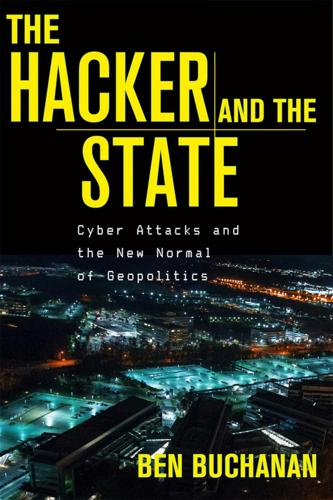
The Hacker and the State: Cyber Attacks and the New Normal of Geopolitics
by
Ben Buchanan
Published 25 Feb 2020
Mark Mazzetti and David Sanger, “U.S. Fears Data Stolen by Chinese Hacker Could Identify Spies,” New York Times, July 24, 2015. 45. Nakashima, “Hacks of OPM Databases Compromised 22.1 Million People.” 46. Brian Krebs, “China to Blame in Anthem Hack?” Krebs on Security, February 6, 2015; United States of America v. Fujie Wang, John Doe, US District Court Southern District of Indiana, indictment filed May 7, 2019. 47. Brian Krebs, “Premera Blue Cross Breach Exposes Financial, Medical Records,” Krebs on Security, March 17, 2015. 48. Krebs, “China to Blame in Anthem Hack?” 49. Aruna Viswanatha and Kate O’Keefe, “Before It Was Hacked, Equifax Had a Different Fear: Chinese Spying,” Wall Street Journal, September 12, 2018. 50.
…
Sergei Shevchenko, Hirman Muhammad bin Abu Bakar, and James Wong, “Taiwan Heist: Lazarus Tools and Ransomware,” BAE Systems blog, October 16, 2017. For local reporting on the case, see “Shalila Moonasinghe Removed as Litro Gas Chairman,” Daily News, October 11, 2017. 32. Taipei Times Staff, “Lai Orders Information Security Review,” Taipei Times, October 8, 2017. 33. Brian Krebs, “Hackers Breached Virginia Bank Twice in Eight Months, Stole $2.4M,” Krebs on Security, July 24, 2018. 34. Brian Krebs, “FBI Warns of ‘Unlimited’ ATM Cashout Blitz,” Krebs on Security, August 12, 2018. 35. The best discussion of the mechanics of the entire Cosmos case comes from Saher Naumaan, a central member of the BAE team. See Saher Naumaan, “Lazarus On The Rise: Insights from SWIFT Bank Attacks,” presentation to BSides Belfast 2018, Belfast, Ireland, September 27, 2018; Adrian Nish and Saher Naumaan, “The Cyber Threat Landscape: Confronting Challenges to the Financial System,” Carnegie Endowment for International Peace, paper, March 25, 2019. 36.
…
He contacted Realtek, the company whose digital certificate Stuxnet had illicitly used, and was met with similar silence. It was only after he and his colleagues began posting analysis online that the cybersecurity community started to take notice.27 In July 2010, the well-respected journalist Brian Krebs wrote a small story about one of the exploits at the core of the worm.28 After that, Microsoft started examining the malicious code, as did other cybersecurity companies.29 One of those companies was Symantec, a large American firm. Unlike VirusBlokAda, Symantec had the resources to do a major investigation into the code, which it called Stuxnet, a word made up by combining some of the attackers’ file names.

Click Here to Kill Everybody: Security and Survival in a Hyper-Connected World
by
Bruce Schneier
Published 3 Sep 2018
Blair et al. (22 Feb 2017), “Update to the IP Commission Report: The theft of American intellectual property: Reassessments of the challenge and United States Policy,” National Bureau of Asian Research, http://www.ipcommission.org/report/IP_Commission_Report_Update_2017.pdf. 75A thief pretends to be: Federal Bureau of Investigation (14 Jun 2016), “Business e-mail compromise: The 3.1 billion dollar scam,” https://www.ic3.gov/media/2016/160614.aspx. Brian Krebs (23 Jun 2016), “FBI: Extortion, CEO fraud among top online fraud complaints in 2016,” Krebs on Security, https://krebsonsecurity.com/2017/06/fbi-extortion-ceo-fraud-among-top-online-fraud-complaints-in-2016. 75Or to divert the proceeds: Kenneth R. Harney (31 Mar 2016), “Scary new scam could swipe all your closing money,” Chicago Tribune, http://www.chicagotribune.com/classified/realestate/ct-re-0403-kenneth-harney-column-20160331-column.html. 75Turns out that the answer is: plenty: Brian Krebs (12 Oct 2012), “The scrap value of a hacked PC, revisited,” Krebs on Security, https://krebsonsecurity.com/2012/10/the-scrap-value-of-a-hacked-pc-revisited. 75Botnets can be used for all sorts of things: Dan Goodin (2 Feb 2018), “Cryptocurrency botnets are rendering some companies unable to operate,” Ars Technica, https://arstechnica.com/information-technology/2018/02/cryptocurrency-botnets-generate-millions-but-exact-huge-cost-on-victims. 75Hackers use bots to commit click fraud: White Ops (20 Dec 2016), “The Methbot operation,” https://www.whiteops.com/hubfs/Resources/WO_Methbot_Operation_WP.pdf. 76“The CaaS model provides easy access”: Rob Wainwright et al. (15 Mar 2017), “European Union serious and organized crime threat assessment: Crime in the age of technology,” Europol, https://www.europol.europa.eu/activities-services/main-reports/european-union-serious-and-organised-crime-threat-assessment-2017. 76They sell hacking tools: Nicolas Rapp and Robert Hackett (25 Oct 2017), “A hacker’s tool kit,” Fortune, http://fortune.com/2017/10/25/cybercrime-spyware-marketplace.
…
v=bDJb8WOJYdA (video), https://www.usenix.org/sites/default/files/conference/protected-files/enigma_slides_joyce.pdf (slides). 45It’s how the Chinese hackers breached: Brendan I. Koerner (23 Oct 2016), “Inside the cyberattack that shocked the U.S. government,” Wired, https://www.wired.com/2016/10/inside-cyberattack-shocked-us-government. 45The 2014 criminal attack against Target Corporation: Brian Krebs (5 Feb 2014), “Target hackers broke in via HVAC company,” Krebs on Security, https://krebsonsecurity.com/2014/02/target-hackers-broke-in-via-hvac-company. 45From 2011 to 2014, Iranian hackers stole: Jim Finkle (29 May 2014), “Iranian hackers use fake Facebook accounts to spy on U.S., others,” Reuters, http://www.reuters.com/article/iran-hackers/iranian-hackers-use-fake-facebook-accounts-to-spy-on-u-s-others-idUSL1N0OE2CU20140529. 45The 2015 hacktivist who broke into: Lorenzo Franceschi-Bicchierai (15 Apr 2016), “The vigilante who hacked Hacking Team explains how he did it,” Vice Motherboard, https://motherboard.vice.com/en_us/article/3dad3n/the-vigilante-who-hacked-hacking-team-explains-how-he-did-it. 45And the 2016 Russian attacks against: David E.
…
journalCode=isec. 73“I think both China and the United States”: Gideon Rachman (5 Jan 2017), “Axis of power,” New World, BBC Radio 4, http://www.bbc.co.uk/programmes/b086tfbh. 73“We have better cyber rocks to throw”: This quote is attributed to several people, but this is the earliest citation I could find: Fred Kaplan (12 Dec 2016), “How the U.S. could respond to Russia’s hacking,” Slate, http://www.slate.com/articles/news_and_politics/war_stories/2016/12/the_u_s_response_to_russia_s_hacking_has_consequences_for_the_future_of.html. 74In early 2018, the Indiana hospital Hancock Health: Charlie Osborne (17 Jan 2018), “US hospital pays $55,000 to hackers after ransomware attack,” ZDNet, http://www.zdnet.com/article/us-hospital-pays-55000-to-ransomware-operators. 74Ransomware is increasingly common: Brian Krebs (16 Sep 2016), “Ransomware getting more targeted, expensive,” Krebs on Security, https://krebsonsecurity.com/2016/09/ransomware-getting-more-targeted-expensive. 74Kaspersky Lab reported: Kaspersky Lab (28 Nov 2016), “Story of the year: The ransomware revolution,” Kaspersky Security Bulletin 2016, https://media.kaspersky.com/en/business-security/kaspersky-story-of-the-year-ransomware-revolution.pdf. 74Symantec found that average ransom amounts: Symantec Corporation (19 Jul 2016), “Ransomware and businesses 2016,” https://www.symantec.com/content/en/us/enterprise/media/security_response/whitepapers/ISTR2016_Ransomware_and_Businesses.pdf.

Data and Goliath: The Hidden Battles to Collect Your Data and Control Your World
by
Bruce Schneier
Published 2 Mar 2015
Lance Duroni (3 Apr 2014), “JPML centralizes Target data breach suits in Minn.,” Law360, http://www.law360.com/articles/524968/jpml-centralizes-target-data-breach-suits-in-minn. banks are being sued: Brian Krebs (8 Jan 2014), “Firm bankrupted by cyberheist sues bank,” Krebs on Security, http://krebsonsecurity.com/2014/01/firm-bankrupted-by-cyberheist-sues-bank. Brian Krebs (20 Jun 2014), “Oil Co. wins $350,000 cyberheist settlement,” Krebs on Security, http://krebsonsecurity.com/2014/06/oil-co-wins-350000-cyberheist-settlement. Brian Krebs (13 Aug 2014), “Tenn. firm sues bank over $327K cyberheist,” Krebs on Security, http://krebsonsecurity.com/2014/08/tenn-utility-sues-bank-over-327k-cyberheist.
…
NSA’s BULLRUN program: James Ball, Julian Borger, and Glenn Greenwald (5 Sep 2013), “Revealed: How US and UK spy agencies defeat internet privacy and security,” Guardian, http://www.theguardian.com/world/2013/sep/05/nsa-gchq-encryption-codes-security. Nicole Perlroth, Jeff Larson, and Scott Shane (5 Sep 2013), “N.S.A. able to foil basic safeguards of privacy on Web,” New York Times, http://www.nytimes.com/2013/09/06/us/nsa-foils-much-internet-encryption.html. British, Russian, Israeli: Brian Krebs (28 May 2014), “Backdoor in call monitoring, surveillance gear,” Krebs on Security, http://krebsonsecurity.com/2014/05/backdoor-in-call-monitoring-surveillance-gear. they have employees secretly: Peter Maass and Laura Poitras (10 Oct 2014), “Core secrets: NSA saboteurs in China and Germany,” Intercept, https://firstlook.org/theintercept/2014/10/10/core-secrets.
…
NSA’s term is: NSA whistleblower Bill Binney described it thus: “… when you can’t use the data, you have to go out and do a parallel construction, [which] means you use what you would normally consider to be investigative techniques, [and] go find the data. You have a little hint, though. NSA is telling you where the data is … .” Alexa O’Brien (30 Sep 2014), “Retired NSA technical director explains Snowden docs,” Second Sight, http://www.alexaobrien.com/secondsight/wb/binney.html. Dread Pirate Roberts: Brian Krebs (14 Oct 2014), “Silk Road lawyers poke holes in FBI’s story,” Krebs on Security, http://krebsonsecurity.com/2014/10/silk-road-lawyers-poke-holes-in-fbis-story. surveillance intended to nab terrorists: Rob Evans and Paul Lewis (26 Oct 2009), “Police forces challenged over files held on law-abiding protesters,” Guardian, http://www.theguardian.com/uk/2009/oct/26/police-challenged-protest-files.
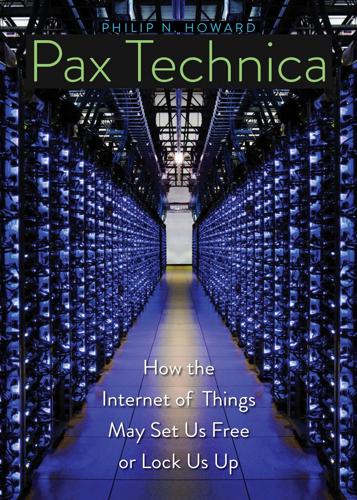
Pax Technica: How the Internet of Things May Set Us Free or Lock Us Up
by
Philip N. Howard
Published 27 Apr 2015
York, “Syria’s Twitter Spambots,” Guardian, April 21, 2011, accessed September 30, 2014, http://www.theguardian.com/commentisfree/2011/apr/21/syria-twitter-spambots-pro-revolution. 37. Qtiesh, “Spam Bots Flooding Twitter to Drown Info About #Syria Protests.” 38. Brian Krebs, “Twitter Bots Drown Out Anti-Kremlin Tweets,” Krebs on Security, December 8, 2011, accessed September 30, 2014, http://krebsonsecurity.com/2011/12/twitter-bots-drown-out-anti-kremlin-tweets/;Mike Orcutt, “Twitter Mischief Plagues Mexico’s Election,” MIT Technology Review, June 21, 2012, accessed September 30, 2014, http://www.technologyreview.com/news/428286/twitter-mischief-plagues-mexicos-election/; Brian Krebs, “Twitter Bots Target Tibetan Protests,” Krebs on Security, March 20, 2012, accessed September 30, 2014, http://krebsonsecurity.com/2012/03/twitter-bots-target-tibetan-protests/; Torin Peel, “The Coalition’s Twitter Fraud and Deception,” Independent Australia, August 26, 2013, accessed September 30, 2014, http://www.independentaustralia.net/politics/politics-display/the-coalitions-twitter-fraud-and-deception,5660; “Jasper Admits to Using Twitter Bots to Drive Election Bid,” Inside Croydon, November 26, 2012, accessed September 30, 2014, http://insidecroydon.com/2012/11/26/jasper-admits-to-using-twitter-bots-to-drive-election-bid/; W.
…
“A Call to Harm: New Malware Attacks Target the Syrian Opposition,” Citizen Lab, June 21, 2013, accessed September 30, 2014, https://citizenlab.org/2013/06/a-call-to-harm/. 28. Alex Cheng and Mark Evans, Inside Twitter: An In-Depth Look at the 5% of Most Active Users (Toronto: Sysomos, August 2009), accessed September 30, 2014, http://www.sysomos.com/insidetwitter/mostactiveusers/. 29. Brian Krebs, “Twitter Bots Target Tibetan Protests,” Krebs on Security, March 20, 2012, accessed September 30, 2014, http://krebsonsecurity.com/2012/03/twitter-bots-target-tibetan-protests/. 30. Mike Orcutt, “Twitter Mischief Plagues Mexico’s Election,” MIT Technology Review, June 21, 2012, accessed September 30, 2014, http://www.technologyreview.com/news/428286/twitter-mischief-plagues-mexicos-election/. 31.
…
Dean Nelson, “China ‘Hacking Websites in Hunt for Tibetan Dissidents,’” Telegraph, August 13, 2013, accessed September 30, 2014, http://www.telegraph.co.uk/news/worldnews/asia/china/10240404/China-hacking-websites-in-hunt-for-Tibetan-dissidents.html. 28. Iain Thomson, “AntiLeaks Boss: We’ll Keep Pummeling WikiLeaks and Assange,” Register, August 13, 2012, accessed September 30, 2014, http://www.theregister.co.uk/2012/08/13/antileaks_wikileaks_attack_response/. 29. Brian Krebs, “Amnesty International Site Serving Java Exploit,” Krebs on Security, December 22, 2011, accessed September 30, 2014, http://krebsonsecurity.com/2011/12/amnesty-international-site-serving-java-exploit/. 30. @indiankanoon, “IK Servers Are Getting DDoSed Using the DNS Reflection Attack,” Indian Kanoon (October 19, 2013), accessed September 30, 2014, https://twitter.com/indiankanoon/status/391497714451492865. 31.

Engineering Security
by
Peter Gutmann
[409] “Adobe Revoking Code Signing Certificate Used To Sign Malware”, Fahmida Rashid, 27 September 2012, http://www.securityweek.com/adoberevoking-code-signing-certificate-used-sign-malware. [410] “Security Advisory: Revocation of Adobe code signing certificate”, Adobe Corporation, 27 September 2012, http://www.adobe.com/support/security/advisories/apsa12-01.html. [411] “Inappropriate Use of Adobe Code Signing Certificate”, Brad Arkin, 27 September 2012, http://blogs.adobe.com/asset/2012/09/inappropriateuse-of-adobe-code-signing-certificate.html. [412] “Bit9 and Our Customers’ Security”, Patrick Morley, 8 February 2013, https://blog.bit9.com/2013/02/08/bit9-and-our-customers-security. [413] “Security Firm Bit9 Hacked, Used to Spread Malware”, Brian Krebs, 8 February 2013, http://krebsonsecurity.com/2013/02/security-firmbit9-hacked-used-to-spread-malware. [414] “Bit9 Breach Began in July 2012”, Brian Krebs, 20 February 2013, http://krebsonsecurity.com/2013/02/bit9-breach-began-in-july-2012. [415] “Bit9 Security Incident Update”, Harry Sverdlove, 25 February 2013, https://blog.bit9.com/2013/02/25/bit9-security-incident-update. [416] “Backdoor.Hikit: New Advanced Persistent Threat”, Branko Spasojevic, 24 August 2012, http://www.symantec.com/connect/blogs/backdoorhikitnew-advanced-persistent-threat. [417] “How to: Create Temporary Certificates for Use During Development”, Microsoft Corporation, 2007, http://technet.microsoft.com/enus/subscriptions/ms733813%28v=vs.85%29.aspx. [418] “Rootkit.TmpHider”, discussion thread, 12 July 2010, http://www.wilderssecurity.com/showthread.php?
…
References 235 [620] “User Education Is Not the Answer to Security Problems”, Jakob Nielsen, 25 October 2004, http://www.useit.com/alertbox/20041025.html. [621] “AOL Names Top Spam Subjects For 2005”, Antone Gonsalves, Information Week TechWeb News, 28 December 2005, http://www.informationweek.com/news/showArticle.jhtml?articleID=175701011. [622] “Should E-Mail Addresses Be Considered Private Data?”, Brian Krebs, 19 October 2007, http://voices.washingtonpost.com/securityfix/2007/10/database_theft_leads_to_target.html. [623] “Deconstructing the Fake FTC E-mail Virus Attack”, Brian Krebs, 5 November 2007, http://voices.washingtonpost.com/securityfix/2007/11/deconstructing_the_fake_ftc_em.html. [624] “Using Cartoons to Teach Internet Security”, Sukamol Srikwan and Markus Jakobsson, Cryptologia, Vol.32, No.2 (April 2008), p.137. [625] “Phishing education for banking customers useless”, Michael Crawford, Computerworld, 7 February 2007, http://www.networkworld.com/news/2007/020707-phishing-education-for-banking-customers.html. [626] “Active Content: Really Neat Technology or Impending Disaster”, Charlie Kaufman, invited talk at the 2001 Usenix Annual Technical Conference, June 2001. [627] Microformats, http://microformats.org/wiki/Main_Page. [628] “Microformats: Empowering your Markup for Web 2.0”, John Allsop, Friends of Ed Press, 2007. [629] “Vulnerability CVE-2004-0615”, US-CERT/NIST, 29 June 2004, http://cve.mitre.org/cgi-bin/cvename.cgi?
…
An Empirical Investigation of OpenID”, San-Tsai Sun, Eric Pospisil, Ildar Muslukhov, Nuray Dindar, Kirstie Hawkey and Konstantin Beznosov, Proceedings of the 7th Symposium on Usable Privacy and Security (SOUPS’11), July 2011, Article No.4. [213] “A Case (Study) For Usability in Secure Email Communication”, Apu Kapadia, IEEE Security and Privacy, Vol.5, No.2 (March/April 2007), p.80. [214] “Sights unseen”, Siri Carpenter, Monitor on Psychology, Vol.32, No.4 (April 2001), p.54. [215] “Fundamental Surprises”, Zvi Lanir, Center for Strategic Studies, University of Tel Aviv, 1986. [216] “Excession”, Iain Banks, Orbit, 1997. [217] “Self-certifying File System”, David Mazieres, PhD thesis, MIT, May 2000. [218] “The ChoicePoint Dilemma: How Data Brokers Should Handle the Privacy of Personal Information”, Paul Otto, Annie Antón and David Baumer, IEEE Security and Privacy, Vol.5, No.5 (September/October 2007), p.15. [219] “Web Fraud 2.0: Digital Forgeries”, Brian Krebs, 21 August 2008, http://voices.washingtonpost.com/securityfix/2008/08/web_fraud_20_digital_forgeries.html. [220] “Cops Pull Plug on Rent-a-Fraudster Service for Bank Thieves”, Kim Zetter, Wired, 19 April 2010, http://www.wired.com/threatlevel/2010/04/callservicebiz/. [221] “(Un)trusted Certificates”, Eddy Nigg, 23 December 2008, https://blog.startcom.org/?
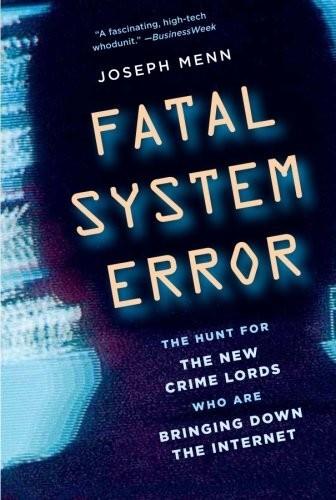
Fatal System Error: The Hunt for the New Crime Lords Who Are Bringing Down the Internet
by
Joseph Menn
Published 26 Jan 2010
To his surprise, an EST executive called and asked what the problem was. The agent flew to meet him in Estonia, where the executive told him that he had re-leased the server to a customer in Moscow whom he only dealt with over ICQ. Armin and his allies got better results when they provided information on EST to Brian Krebs, a Washington Post tech security writer who gave the Atrivo and McColo studies the broadest exposure. Krebs reported on hundreds of malicious sites at EST Domains, then followed up with a report that EST Chief Executive Vladimir Tsastsin had recently been convicted of credit card fraud and forgery.
…
I was fortunate to be aided by many of the most able private researchers, not all of whom are paid for their work, including Joe Stewart, Rafal Rohozinski, Don Jackson, Jart Armin, Paul Ferguson, Avivah Litan, and Dmitri Alperovich. My fellow journalistic specialists also do an important service for followers like me and for the world at large. Among the very best are Brian Krebs, John Markoff, Jon Swartz, Byron Acohido, Kevin Poulsen, Kim Zetter, John Leyden, and Robert McMillan. I am grateful to my former colleagues at the Los Angeles Times, who supported my early reporting and allowed me a leave to write; my new friends at the Financial Times, who gave me time to finish; Lindsay Jones and others at PublicAffairs; my agent Jill Marsal; Chris Gaither, who served as an unpaid manuscript editor; and those close to me who dealt with my prolonged distraction and repeated absences.
…
CHAPTER 11 196 as high as possible, at King Arthur: Sources include Pohamov, others in Russian and U.K. law enforcement, and Lyon. 196 a man in his early twenties living in the Russian republic of Dagestan: A U.S. official with another federal agency confirmed that identification for its publication here, as did a colleague of Crocker’s at the NHTCU. 196 signaling an end to the subject: Crocker described this scene to colleagues. 196 The committee never pursued the case: Interviews with Russian law enforcement. 198 much to Andy’s amusement: Sources for this section include Lyon and another person at the party. 199 give his country another chance: Interview with Pohamov. 200 had to be numbered by hand: Crocker described the Russian format when discussing previous submissions. Other details are from Crocker’s law enforcement allies. 200 including Milsan: U.S. law enforcement sources. 201 within days of its release: According to security firm Commtouch. 201 Small businesses were increasingly targeted in account transfers: See such Brian Krebs articles on the topic as http://voices.washingtonpost.com/securitynx/2009/09/more_business_banking_victims.html?. 201 far less than half of 1 percent of the perpetrators: The Gartner study by Litan. 202 the top country for hacking: Interviews with Zenz, Henry, and others. 203 “political protection at a very strong level”: Interviews with U.K. and U.S. law enforcement, private researchers including Jart Armin, Paul Ferguson, David Bizeul, Don Jackson, and Zenz, along with written reports from those five and others.
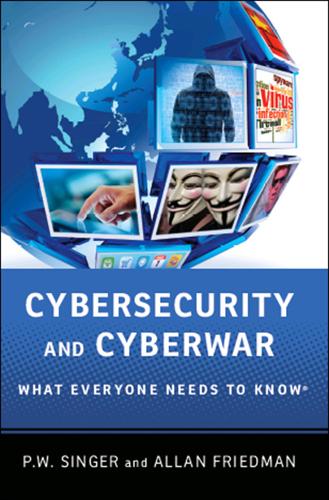
Cybersecurity: What Everyone Needs to Know
by
P. W. Singer
and
Allan Friedman
Published 3 Jan 2014
On the other hand, since the world of cybersecurity is not a unified one, why should we expect a single approach to solve all the problems that have emerged, or frankly even to be possible? Approach It as a Public-Private Problem: How Do We Better Coordinate Defense? For a few weeks, a single blogger was the savior of the Internet. But, as with all superheroes, he actually needed a little bit of help. In 2008, Washington Post reporter Brian Krebs, who blogs at the Security Fix site, became curious about a single company that was poisoning the Internet and why everyone else was letting them get away with it. The company in question was McColo, a web hosting company physically based in California with a client list that, as Krebs wrote, “includes some of the most disreputable cyber-criminal gangs in business today.”
…
It’s not enough for single actors or organizations to try to build higher walls or better malware detection on their own. Attackers adapt. Moreover, attackers exploit boundaries of control and responsibility, setting up a collective action problem. By bringing together the necessary actors and information, Brian Krebs was able to spur effective action, leveraging cooperation against the right fulcrum. While cyberspace seems diffuse and decentralized—simultaneously one of the key advantages and insecurities of the Internet—there are often bottlenecks of control, choke points where the defenders can concentrate resources to gain an advantage.
…
By working together to find standards that meet evolving needs but still allow firms to flourish, the public and private sectors can find a good balance. The key point is that cybersecurity requires coordination and action outside of the immediate victims or even owners of the networks under attack. Brian Krebs didn’t have the power of the government behind him, but his actions mattered because he mobilized a network that could target key choke points by malicious actors in cyberspace. But some problems of scale or target move the matter from the easily resolved situations where private parties have incentives to come together, like the ISPs in the McColo case or banks in financial fraud, to situations where the incentives might not be sufficient or the threat touches on public security concerns.

DarkMarket: Cyberthieves, Cybercops and You
by
Misha Glenny
Published 3 Oct 2011
Like many others, he believed that the person behind Lord Cyric lived in Montreal, Canada, but his enquiries of the Royal Canadian Mounted Police cyber division brought him no joy. In fact, although Cyric’s IP addresses could be traced to Montreal, they would occasionally show up as being located in Toronto, which is where some sleuths suspected he really lived. Several carders picked up and ran with the rumour that Lord Cyric was in reality Brian Krebs, a journalist writing on cyber security who at the time worked for The Washington Post. There was no evidence for this – indeed, quite the contrary, for Krebs is far too serious a writer to risk ruining his reputation by becoming involved with the people he is actually investigating. There followed a slew of rumours, but nobody ever got to the bottom of who Lord Cyric really was or what he was doing.
…
I would recommend two books dealing specifically with cyber crime, Kevin Poulsen’s Kingpin and Joseph Menn’s Fatal System Error. For a broader introduction into some of the challenges emerging as a consequence of Internet technology, Jonathan Zittrain’s The Future of the Internet: And How to Stop It should be the first port of call. Other blogs of real value include Krebsonsecurity by Brian Krebs; Bruce Schneier’s newsletter, Crypto-gram; the blog of F-Secure, the Finnish Computer Security company; and, finally, Dancho Danchev and Ryan Naraine’s Zero Day blog on Znet. ACKNOWLEDGEMENTS Writing this book presented many challenges which I could never have met had it not been for the generous assistance I received from a number of friends and colleagues around the world.
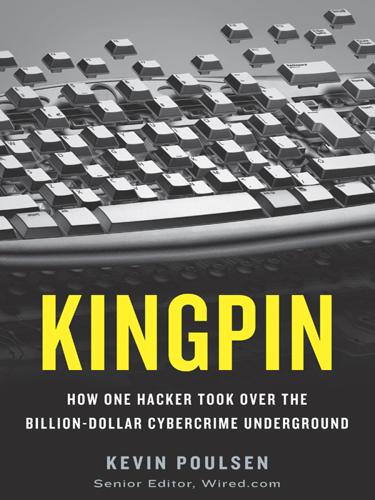
Kingpin: How One Hacker Took Over the Billion-Dollar Cybercrime Underground
by
Kevin Poulsen
Published 22 Feb 2011
District Court for the Eastern District of New York. 3 it was Jonathan James who would pay the highest price: See the author’s “Former Teen Hacker’s Suicide Linked to TJX Probe,” Wired.com, July 9, 2009 (http://www.wired.com/threatlevel/2009/07/hacker/). 4 They recruit ordinary consumers as unwitting money launderers: For more detail on these so-called “money mule” scams, see the blog of former Washingtonpost.com reporter Brian Krebs, who has covered the crime extensively: http://krebsonsecurity.com/. 5 the Secret Service had been paying Gonzalez an annual salary of $75,000 a year: First reported in Kim Zetter, “Secret Service Paid TJX Hacker $75,000 a Year,” Wired.com, March 22, 2010. 6 filed by the attorneys general of 41 states: Sources include Dan Kaplan, “TJX settles over breach with 41 states for $9.75 million,” SC Magazine, June 23, 2009 (http://www.scmagazineus.com/tjx-settles-over-breach-with-41-states-for-975-million/article/138930/). 7 another $40 million to Visa-issuing banks: Mark Jewell, “TJX to pay up to $40.9 million in settlement with Visa over data breach,” Associated Press, November 30, 2007. 8 Heartland had been certified PCI compliant: Sources include Ellen Messmer, “Heartland breach raises questions about PCI standard’s effectiveness,” Network World, January 22, 2009 (http://www.networkworld.com/news/2009/012209-heartland-breach.html). 9 Hannaford Brothers won the security certification even as hackers were in its systems: Sources include Andrew Conry-Murray, “Supermarket Breach Calls PCI Compliance into Question,” InformationWeek, March 22, 2008. 10 The restaurants filed a class-action lawsuit: http://www.prlog.org/10425165-secret-service-investigation-lawsuit-cast-shadow-over-radiant-systems-and-distributo.html.
…
The story of Max Vision would have listed heavily to his criminal side were it not for Tim Spencer and Marty Roesch, who shared their experience of Max as white-hat hacker, and Kimi Mack, who spoke candidly about her marriage to Max. My thanks also to security wunderkind Marc Maiffret, who helped isolate some of Max’s exploits. The underworld that Kingpin delves into has been illuminated by a number of first-rate journalists, including Bob Sullivan, Brian Krebs, Joseph Menn, Byron Acohido, Jon Swartz, and my Wired colleague Kim Zetter. Finally, my thanks to my wife, Lauren Gelman, without whose loving support and sacrifice this book would not have been possible, and to Sadelle and Asher, who will find their computer use closely supervised until they’re eighteen.
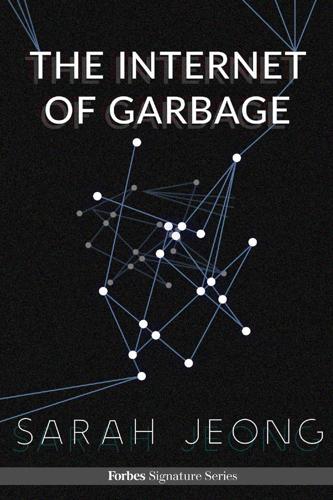
The Internet of Garbage
by
Sarah Jeong
Published 14 Jul 2015
But today spam is largely understood as robotically generated text issued from “botnets” of compromised computers that have been unknowingly recruited into transmitting mind-bogglingly large amounts of unwanted messages advertising Viagra, genital enhancements, Nigerian get-rich-quick schemes, or linking to malware in order to steal passwords or simply recruit yet another computer into the mechanical zombie horde. Spam has become the realm of Russian crime rings (as documented by Brian Krebs in many places, including his book Spam Nation), a multi-million-dollar industry that is combated in turn by billions of dollars in anti-spam technology. Of course, the old definition of spam still lingers. For example, someone might be chided for “spamming a mailing list,” when they themselves are not a robot attempting to evade a filter, nor a commercial mailer advertising a product or a service.

Coders: The Making of a New Tribe and the Remaking of the World
by
Clive Thompson
Published 26 Mar 2019
them back to you: Doug Olenick, “Simple, but Not Cheap, Phishing Kit Found for Sale on Dark Web,” SC Magazine, April 26, 2018, accessed August 19, 2018, https://www.scmagazine.com/simple-but-not-cheap-phishing-kit-found-for-sale-on-dark-web/article/761520; Kishalaya Kundu, “New Phishing Kit on Dark Web Lets Anyone Launch Cyber Attacks,” Beebom, April 30, 2018, accessed August 19, 2018, https://beebom.com/new-phishing-kit-dark-web; Ionut Arghire, “New Advanced Phishing Kit Targets eCommerce,” SecurityWeek, April 25, 2018, accessed August 19, 2018, https://www.securityweek.com/new-advanced-phishing-kit-targets-ecommerce. of all intrusion groups: Internet Threat Security Report: Volume 23 (March 2018), Symantec, accessed August 19, 2018, https://www.symantec.com/security-center/threat-report. of gray indeed: Brian Krebs, “Who Is Anna-Senpai, the Mirai Worm Author?,” Krebs on Security, January 17, 2017, accessed August 19, 2018, https://krebsonsecurity.com/2017/01/who-is-anna-senpai-the-mirai-worm-author; Brian Krebs, “Mirai IoT Botnet Co-authors Plead Guilty,” Krebs on Security, December 17, 2017, accessed August 19, 2018, https://krebsonsecurity.com/2017/12/mirai-iot-botnet-co-authors-plead-guilty; Mark Thiessen, “3 Hackers Get Light Sentences after Working with the FBI,” Associated Press, September 19, 2018, accessed October 2, 2018, https://apnews.com/b6f03f9a13e04b19afed3375476b4132; Garrett M.
…
When the owner of a site that Jha had attacked explained that there were real-life consequences for these digital onslaughts, he replied with cynicism. “Well, I stopped caring about other people a long time ago,” he wrote. “My life experience has always been get fucked over or fuck someone else over.” The law eventually caught up with him. Brian Krebs, a prominent journalist who investigates the world of malware, spent months patiently rooting up Jha’s identity (like all malware authors, he’d kept it a deep secret). After the authorities arrested Jha, he and his Mirai partners were sentenced five years of probation and 62.5 workweeks of community service; as it happens, they had already flipped and begun helping the FBI “on cybercrime and cybersecurity matters,” as the sentencing memorandum noted.

@War: The Rise of the Military-Internet Complex
by
Shane Harris
Published 14 Sep 2014
. [>] Shell, Schlumberger, and other: Zain Shauk, “Phishing Still Hooks Energy Workers,” FuelFix, December 22, 2013, http://fuelfix.com/blog/2013/12/22/phishing-still-hooks-energy-workers/. [>] In a rare public appearance: Berlin spoke at a cyber security conference at the Newsuem in Washington, DC, on May 22, 2013. [>] A few months after the intrusions: Brian Krebs, “Chinese Hackers Blamed for Intrusion at Energy industry Giant Telvent,” KrebsonSecurity, September 26, 2012, http://krebsonsecurity.com/2012/09/chinese-hackers-blamed-for-intrusion-at-energy-industry-giant-telvent/. [>] But the country also needs: World Bank, “GDP Growth,” http://data.worldbank.org/indicator/NY.GDP.MKTP.KD.ZG [>] China is the world’s second-largest: US Energy Information Administration, http://www.eia.gov/countries/country-data.cfm?
…
. [>] Earlier in the year a pair: Nicole Perlroth, “Electrical Grid Is Called Vulnerable to Power Shutdown,” Bits, New York Times, October 18, 2013, http://bits.blogs.nytimes.com/2013/10/18/electrical-grid-called-vulnerable-to-power-shutdown/. [>] “There isn’t a computer system”: McConnell spoke at a cyber security conference sponsored by Bloomberg in Washington, DC, October 30, 2013. [>] Investigators concluded that the hackers: Brian Krebs, “Target Hackers Broke in Via HVAC Company,” KrebsonSecurity, February 5, 2014, http://krebsonsecurity.com/2014/02/target-hackers-broke-in-via-hvac-company/. [>] In February 2014 a Senate committee report: Craig Timberg and Lisa Rein, “Senate Cybersecurity Report Finds Agencies Often Fail to Take Basic Preventative Measures,” Washington Post, February 4, 2013, http://www.washingtonpost.com/business/technology/senate-cybersecurity-report-finds-agencies-often-fail-to-take-basic-preventive-measures/2014/02/03/493390c2-8ab6-11e3-833c-33098f9e5267_story.html. [>] At a security conference in Washington, DC: Alexander spoke in Washington, DC, at the Newsuem on October 8, 2013, http://www.youtube.com/watch?
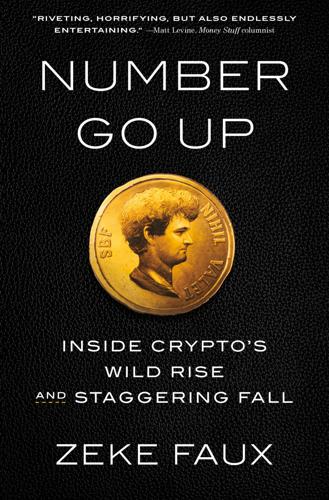
Number Go Up: Inside Crypto's Wild Rise and Staggering Fall
by
Zeke Faux
Published 11 Sep 2023
read another bizarre message I’d received from a random number. GO TO NOTE REFERENCE IN TEXT A project finance lawyer: Alastair McCready, “From Industrial-Scale Scam Centers, Trafficking Victims Are Being Forced to Steal Billions,” Vice, July 13, 2022. GO TO NOTE REFERENCE IN TEXT A divorced mother of three: Brian Krebs, “Massive Losses Define Epidemic of ‘Pig Butchering,’ ” Krebs on Security (blog), July 21, 2022. GO TO NOTE REFERENCE IN TEXT A twenty-four-year-old social media producer: Kevin Roose, “Crypto Scammers’ New Target: Dating Apps,” New York Times, February 21, 2022. GO TO NOTE REFERENCE IN TEXT Once the mark was gone: The con man’s biggest challenge was getting rid of the victim after stealing their cash.
…
GO TO NOTE REFERENCE IN TEXT often eventually arrested: Shaffiq Alkhatib, “Jail for Money Mule Who Worked with Member of Nigerian Love Scam Group and Had Child with Him,” Straits Times, February 23, 2023. GO TO NOTE REFERENCE IN TEXT IRS traced the funds: Mitchell Clark, “A Cringe Rapper Slash Forbes Contributor Allegedly Found with Billions in Stolen Bitcoin,” The Verge, February 8, 2022. GO TO NOTE REFERENCE IN TEXT U.S. Secret Service agent: Brian Krebs, “Confessions of an ID Theft Kingpin, Part I,” Krebs on Security (blog), August 26, 2020. GO TO NOTE REFERENCE IN TEXT string of suspicious deaths: Mech Dara, “Spate of Violent Crimes Against Foreigners Nabs More Than 20 Suspects,” Voice of Democracy, February 2, 2022. GO TO NOTE REFERENCE IN TEXT “If an ambulance doesn’t go inside”: Husain Hader, “Sihanoukville’s Dirty Secret: Dark Rumours and Inside Information Raise Questions About the China Project,” Khmer Times, September 6, 2021.
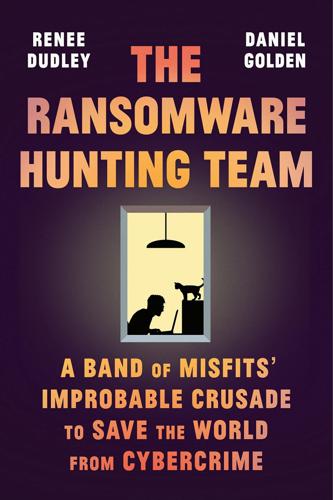
The Ransomware Hunting Team: A Band of Misfits' Improbable Crusade to Save the World From Cybercrime
by
Renee Dudley
and
Daniel Golden
Published 24 Oct 2022
“While we will never condone”: “Free Ransomware Help for Healthcare Providers During the Coronavirus Outbreak,” Emsisoft blog, March 18, 2020, blog.emsisoft.com/en/35921/free-ransomware-help-for-healthcare-providers-during-the-coronavirus-outbreak/. “You hit us”: Sam Varghese, “Big US Travel Management Firm CWT Pays Out U.S. $4.5m to Ransomware Gang,” iTWire.com, August 2, 2020, itwire.com/business-it-news/security/big-us-travel-management-firm-cwt-pays-out-us$4-5m-to-ransomware-gang.html. “We can confirm”: Brian Krebs, “Ransomware Group Turns to Facebook Ads,” Krebs on Security, November 10, 2020, krebsonsecurity.com/2020/11/ransomware-group-turns-to-facebook-ads/. 330 miles per hour: Autumn Bows, “Here’s How the Koenigsegg Jesko Absolut Will Reach 330MPH,” HotCars, October 12, 2020, hotcars.com/heres-how-the-koenigsegg-jesko-absolut-will-reach-330mph/.
…
,” Lawfare, April 26, 2021, lawfareblog.com/when-should-us-cyber-command-take-down-criminal-botnets. it penetrated the botnet: Ellen Nakashima, “Cyber Command Has Sought to Disrupt the World’s Largest Botnet, Hoping to Reduce Its Potential Impact on the Election,” Washington Post, October 9, 2020. false information: Brian Krebs, “Attacks Aimed at Disrupting the Trickbot Botnet,” Krebs on Security, October 2, 2020, krebsonsecurity.com/2020/10/attacks-aimed-at-disrupting-the-trickbot-botnet/. “an increased and imminent”: “Ransomware Activity Targeting the Healthcare and Public Health Sector,” Cybersecurity & Infrastructure Security Agency, Alert (AA20-302A), October 28, 2020, cisa.gov/uscert/ncas/alerts/aa20-302a.
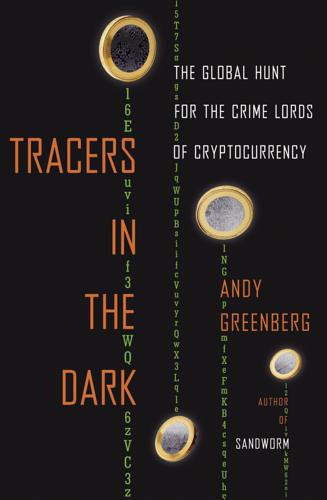
Tracers in the Dark: The Global Hunt for the Crime Lords of Cryptocurrency
by
Andy Greenberg
Published 15 Nov 2022
But while they all used the first clustering method suggested in Satoshi’s original Bitcoin white paper, only the Irish team had briefly suggested the change-making method in its 2012 study and, unlike the UCSD team, didn’t actually implement that technique. Meiklejohn says she wasn’t in fact aware of the Irish team’s mention of change-based clustering at the time she was working on the technique. CHAPTER 9 Cyber Narc In late July 2013, an independent security journalist named Brian Krebs found an unwelcome, if not entirely unexpected, gift in the mail. Inside a thin envelope postmarked from Chicago was a copy of Chicago Confidential, the weekly magazine insert distributed to subscribers of the Chicago Tribune. Taped to a jewelry ad on the back of the magazine were a baker’s dozen of small plastic bags, covered in a pattern of black and gold skulls.
…
GO TO NOTE REFERENCE IN TEXT Another theft of 18,500 bitcoins: Ibid. GO TO NOTE REFERENCE IN TEXT “Even our relatively small experiment”: Ibid. GO TO NOTE REFERENCE IN TEXT CHAPTER 9: CYBER NARC Each one contained a teaspoon: Brian Krebs, “Mail from the (Velvet) Cybercrime Underground,” Krebs on Security, July 30, 2013, krebsonsecurity.com. GO TO NOTE REFERENCE IN TEXT “(I like having them nipping”: Greenberg, “Interview with a Digital Drug Lord.” GO TO NOTE REFERENCE IN TEXT I’d ordered one gram of pot: Andy Greenberg, “Here’s What It’s Like to Buy Drugs on Three Anonymous Online Black Markets,” Forbes, Aug. 14, 2013, forbes.com.

Army of None: Autonomous Weapons and the Future of War
by
Paul Scharre
Published 23 Apr 2018
DARPA, “Home | DRC Finals,” accessed June 14, 2017, http://archive.darpa.mil/roboticschallenge/. 217 “automatically check the world’s software”: David Brumley, “Why CGC Matters to Me,” ForAllSecure, July 26, 2016, https://forallsecure.com/blog/2016/07/26/why-cgc-matters-to-me/. 217 “fully autonomous system for finding and fixing”: David Brumley, “Mayhem Wins DARPA CGC,” ForAllSecure, August 6, 2016, https://forallsecure.com/blog/2016/08/06/mayhem-wins-darpa-cgc/. 217 vulnerability is analogous to a weak lock: David Brumley, interview, November 24, 2016. 218 “There’s grades of security”: Ibid. 218 “an autonomous system that’s taking all of those things”: Ibid. 218 “Our goal was to come up with a skeleton key”: Ibid. 219 “true autonomy in the cyber domain”: Michael Walker, interview, December 5, 2016. 219 comparable to a “competent” computer security professional: David Brumley, interview, November 24, 2016. 219 DEF CON hacking conference: Daniel Tkacik, “CMU Team Wins Fourth ‘World Series of Hacking’ Competition,” CMU.edu, July 31, 2017. 219 Brumley’s team from Carnegie Mellon: Ibid. 219 Mirai: Brian Krebs, “Who Makes the IoT Things Under Attack?” Krebs on Security, October 3, 2016, https://krebsonsecurity.com/2016/10/who-makes-the-iot-things-under-attack/. 219 massive DDoS attack: Brian Krebs, “KrebsOnSecurity Hit With Record DDoS,” Krebs on Security, September 21, 2016, https://krebsonsecurity.com/2016/09/krebsonsecurity-hit-with-record-ddos/. 219 most IoT devices are “ridiculous vulnerable”: David Brumley, interview, November 24, 2016. 219 6.4 billion IoT devices: “Gartner Says 6.4 Billion Connected,” Gartner, November 10, 2015, http://www.gartner.com/newsroom/id/3165317. 220 “check all these locks”: David Brumley, interview, November 24, 2016. 220 “no difference” between the technology: Ibid. 220 “All computer security technologies are dual-use”: Michael Walker, interview, December 5, 2016. 220 “you have to trust the researchers”: David Brumley, interview, November 24, 2016. 220 “It’s going to take the same kind”: Michael Walker, interview, December 5, 2016. 221 “I’m not saying that we can change to a place”: Ibid. 221 “It’s scary to think of Russia”: David Brumley, interview, November 24, 2016. 221 “counter-autonomy”: David Brumley, “Winning Cyber Battles: The Next 20 Years,” unpublished working paper, November 2016. 221 “trying to find vulnerabilities”: David Brumley, interview, November 24, 2016. 221 “you play the opponent”: Ibid. 221 “It’s a little bit like a Trojan horse”: Ibid. 222 “computer equivalent to ‘the long con’”: Brumley, “Winning Cyber Battles: The Next 20 Years.” 222 “Make no mistake, cyber is a war”: Ibid. 222 F-35 . . . tens of millions of lines of code: Jacquelyn Schneider, “Digitally-Enabled Warfare: The Capability-Vulnerability Paradox,” Center for a New American Security, Washington DC, August 29, 2016, https://www.cnas.org/publications/reports/digitally-enabled-warfare-the-capability-vulnerability-paradox. 223 Hacking back is when: Dorothy E.

Dawn of the Code War: America's Battle Against Russia, China, and the Rising Global Cyber Threat
by
John P. Carlin
and
Garrett M. Graff
Published 15 Oct 2018
David Ensor, “Al Qaeda Letter Called ‘Chilling,’” CNN, October 12, 2005, edition.cnn.com/2005/WORLD/meast/10/11/alqaeda.letter/. 6. Rita Katz and Michael Kern, “Terrorist 007, Exposed,” Washington Post, March 26, 2006, www.washingtonpost.com/wp-dyn/content/article/2006/03/25/AR2006 032500020.html. 7. Brian Krebs, “Terrorism’s Hook into Your Inbox: U.K. Case Shows Link Between Online Fraud and Jihadist Networks,” Washington Post, July 5, 2007, www.washington post.com/wp-dyn/content/article/2007/07/05/AR2007070501153_pf.html. 8. Gordon Corera, “The World’s Most Wanted Cyber-jihadist,” BBC News, January 16, 2008, www.news.bbc.co.uk/2/hi/americas/7191248.stm. 9.
…
“Capability of the People’s Republic of China to Conduct Cyber Warfare and Computer Network Exploitation: Prepared for the U.S.-China Economic and Security Review Commission,” Northrop Grumman, October 9, 2009, nsarchive2.gwu.edu/NSAEBB/NSAEBB424/docs/Cyber-030.pdf. 95. Poulsen, Kingpin, 74. 96. See Misha Glenny, DarkMarket: How Hackers Became the New Mafia (Vintage, 2012), 41. 97. Brian Krebs, Spam Nation: The Inside Story of Organized Cybercrime—From Global Epidemic to Your Front Door (Sourcebooks, 2014), 17. 98. Ibid., 26. 99. Ibid., 20. 100. Joseph B. Tompkins and Linda A. Mar, “The 1984 Federal Computer Statute: A Partial Answer to a Pervasive Problem,” The John Marshall Journal of Information Technology & Privacy Law, vol. 6, no. 3, 1986, repository.jmls.edu/cgi/view content.cgi?
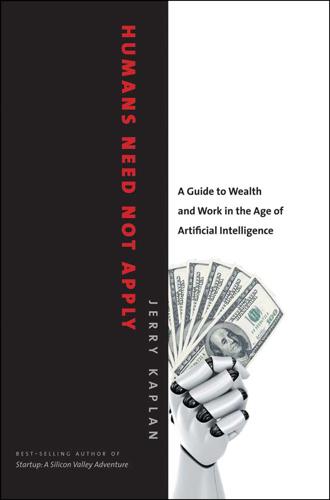
Humans Need Not Apply: A Guide to Wealth and Work in the Age of Artificial Intelligence
by
Jerry Kaplan
Published 3 Aug 2015
Mark Twain famously said, “It is my … hope … that all of us … may eventually be gathered together in heaven … except the inventor of the telephone.” Were he alive today, I’m confident he would include the inventor of the CAPTCHA. Regarding the use of low-skilled low-cost labor to solve these, see Brian Krebs, “Virtual Sweatshops Defeat Bot-or-Not Tests,” Krebs on Security (blog), January 9, 2012, http://krebsonsecurity.com/2012/01/virtual-sweatshops-defeat-bot-or-not-tests/. 5. OFFICER, ARREST THAT ROBOT 1. E. P. Evans, The Criminal Prosecution and Capital Punishment of Animals (1906; repr., Clark, N.J.: Lawbook Exchange, 2009). 2.

Silk Road
by
Eileen Ormsby
Published 1 Nov 2014
Several stores offer stolen or counterfeit Apple products. One advertiser offers to steal goods to order, another offers bomb-making lessons and yet another says they can arrange for an enemy to be visited by a SWAT team. (This seemed a bit far-fetched, but ‘swatting’ is a real phenomenon in the United States, as security expert and blogger Brian Krebs discovered in March 2013. He had annoyed many hackers and shady websites over the years with his investigations, so someone placed a 911 call using instant message chats via a relay service designed for hearing-impaired and deaf callers. They said Russians had broken into Krebs’ house, killing his wife.
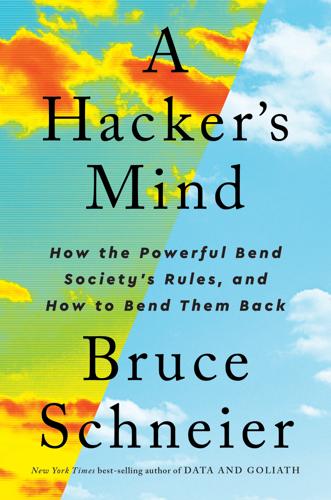
A Hacker's Mind: How the Powerful Bend Society's Rules, and How to Bend Them Back
by
Bruce Schneier
Published 7 Feb 2023
Sanusi, Mohd Nor Firdaus Rameli, and Yusarina Mat Isa (13 Apr 2015), “Fraud schemes in the banking institutions: Prevention measures to avoid severe financial loss,” Procedia Economics and Finance, https://www.semanticscholar.org/paper/Fraud-Schemes-in-the-Banking-Institutions%3A-Measures-Sanusi-Rameli/681c06a647cfef1e90e52ccbf829438016966c44. 33this is known as “jackpotting”: Joseph Cox (14 Oct 2019), “Malware that spits cash out of ATMs has spread across the world,” Vice Motherboard, https://www.vice.com/en_us/article/7x5ddg/malware-that-spits-cash-out-of-atms-has-spread-across-the-world. 33Another attack: Dan Goodin (22 Jul 2020), “Thieves are emptying ATMs using a new form of jackpotting,” Wired, https://www.wired.com/story/thieves-are-emptying-atms-using-a-new-form-of-jackpotting. 34US Secret Service began warning: Brian Krebs (27 Jan 2018), “First ‘jackpotting’ attacks hit U.S. ATMs,” Krebs on Security, https://krebsonsecurity.com/2018/01/first-jackpotting-attacks-hit-u-s-atms. 34Barnaby Jack demonstrated: Kim Zetter (28 Jul 2010), “Researcher demonstrates ATM ‘jackpotting’ at Black Hat conference,” Wired, https://www.wired.com/2010/07/atms-jackpotted. 7.
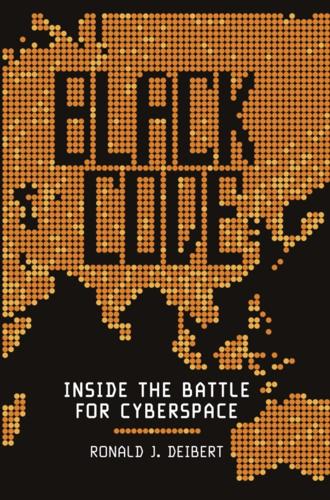
Black Code: Inside the Battle for Cyberspace
by
Ronald J. Deibert
Published 13 May 2013
In January 2012, Jan Droemer and Dirk Kollberg reported on their own detailed investigation of the Koobface perpetrators in “The Koobface Malware Gang Exposed,” Sophos Lab, January 2012, http://www.sophos.com/medialibrary/PDFs/other/sophoskoobfacearticle_rev_na.pdf?dl=true. 2 Electrons may move at the speed of light, but legal systems crawl at the speed of bureaucratic institutions: The lack of international co-operation around cyber security is discussed in Brian Krebs, “From (& To) Russia, With Love,” Washington Post, March 3, 2009, http://voices.washingtonpost.com/securityfix/2009/03/from_to_russia_with_love.html. See also Jeremy Kirk, “UK Police Reveal Arrests Over Zeus Banking Malware,” Computer World, November 18, 2009, http://www.computerworld.com/s/article/9141092/UK_police_reveal_arrests_over_Zeus_banking_malware; and Omar El-Akkad, “Canadian Firm Helps Disable Massive Botnet,” Globe and Mail, March 3, 2010, http://www.globeandmail.com/news/technology/canadian-firm-helps-disable-massive-botnet/article1488838. 3 Specialists working for Facebook, Jan Droemer, and other security researchers: In January 2012, Facebook outed the identity of the Koobface perpetrators in “Facebook’s Continued Fight Against Koobface,” January 17, 2012, https://www.facebook.com/note.php?

The Industries of the Future
by
Alec Ross
Published 2 Feb 2016
In addition, the hackers stole: Mark Hosenball, “Target Vendor Says Hackers Breached Data Link Used for Billing,” Reuters, February 6, 2014, http://www.reuters.com/article/2014/02/06/us-target-breach-vendor-idUSBREA1523E20140206. Profits fell 46 percent in: Elizabeth A. Harris, “Faltering Target Parts Ways with Chief,” New York Times, May 6, 2014, http://www.nytimes.com/2014/05/06/business/target-chief-executive-resigns.html?ref=technology&_r=0. The company could still face: Brian Krebs, “Target Hackers Broke in via HVAC Company,” Krebs on Security (blog), February 5, 2014, http://krebsonsecurity.com/2014/02/target-hackers-broke-in-via-hvac-company/. It lost billions of dollars: Susan Taylor, Siddharth Cavale, and Jim Finkle, “Target’s Decision to Remove CEO Rattles Investors,” Reuters, May 5, 2014, http://www.reuters.com/article/2014/05/05/us-target-ceo-idUSBREA440BD20140505.

The Black Box Society: The Secret Algorithms That Control Money and Information
by
Frank Pasquale
Published 17 Nov 2014
Harris and Nicole Perlroth, “For Target, the Breach Numbers Grow,” New York Times, January 1, 2014, http://www.nytimes.com /2014 /01/11/business/target-breach-affected-70 -million-customers.html?_r=0. 59. Thomas R. McLean & Alexander B. McLean, “Dependence on Cyberscribes-Issues in E-Security,” 8 J. Bus. & Tech. L. (2013): 59 (discussing instances of medical information on the black market); Brian Krebs & Anita Kumar, “Hackers Want Millions for Data on Prescriptions,” Wash. Post, May 8, 2009, at B1. 60. Misha Glenny, DarkMarket: How Hackers Became the New Mafi a (New York: Vintage Books, 2012) 2 (“this minuscule elite (call them geeks, technos, hackers, coders, securocrats, or what you will) has a profound understanding of a technology that every day directs our lives more intensively and extensively, while most of the rest of us understand absolutely zip about it.”). 61.
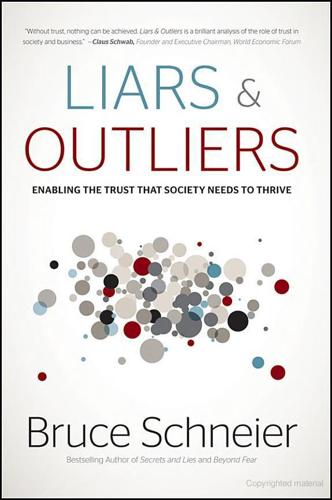
Liars and Outliers: How Security Holds Society Together
by
Bruce Schneier
Published 14 Feb 2012
Rick Frei (2010), “Witness Intimidation and the Snitching Project,” written testimony submitted to the Subcommittee on Drugs and Crime, U.S. Senate Committee on the Judiciary. Con artists try David Maurer (1940), The Big Con: The Story of the Confidence Man, Bobbs Merrill. Fake anti-virus software Brian Krebs (3 Aug 2011), “Fake Antivirus Industry Down, But Not Out,” Krebs on Security. Internet money laundering Mitchell Zuckoff (15 May 2005), “Annals of Crime: The Perfect Mark,” The New Yorker, 36–42. doctrine of necessity Leslie Wolf-Phillips (1979), “Constitutional Legitimacy: A Study of the Doctrine of Necessity.”

Terms of Service: Social Media and the Price of Constant Connection
by
Jacob Silverman
Published 17 Mar 2015
Sept. 13, 2013. propublica.org/article/everything-we-know-about-what-data-brokers-know-about-you. 215 TSA sells to debt collectors: Susan Stellin. “Security Check Now Starts Long Before You Fly.” New York Times. Oct. 21, 2013. nytimes.com/2013/10/22/business/security-check-now-starts-long-before-you-fly.html. 215 Experian investigation: Brian Krebs. “Experian Sold Consumer Data to ID Theft Service.” KrebsonSecurity. Oct. 20, 2013. krebsonsecurity.com/2013/10/experian-sold-consumer-data-to-id-theft-service. 215 Identity thieves in Vietnam: Sean Vitka. “Experian-Acquired Data Broker Sold Social Security Numbers to Identity Thieves.” Slate.

Countdown to Zero Day: Stuxnet and the Launch of the World's First Digital Weapon
by
Kim Zetter
Published 11 Nov 2014
They had to go public with the news.15 So on July 12, Ulasen posted a brief announcement about the zero-day to his company’s website and to an online English-language security forum, warning that an epidemic of infections was about to break out.16 He divulged few details about the hole it was attacking, to avoid giving copycat hackers information that would help them exploit it. But members of the forum grasped the implications quickly, noting that it had the potential to be “deadly to many.” Three days later, tech journalist Brian Krebs picked up the announcement and wrote a blog post about it, summarizing what little was known about the vulnerability and exploit at the time.17 The news raced through the security community, causing everyone to brace for a wave of assaults expected to come from the worm and copycat attacks using the same exploit.18 In the meantime, the head of an institute in Germany that researched and tested antivirus products brokered an introduction between Ulasen and his contacts at Microsoft, prompting the software company to begin work on a patch.19 But with news of the vulnerability already leaked, Microsoft decided to release an immediate advisory about the critical flaw to customers, along with a few tips advising them how to mitigate their risk of infection in the meantime.

This Is How They Tell Me the World Ends: The Cyberweapons Arms Race
by
Nicole Perlroth
Published 9 Feb 2021
A special thanks also to my competitors, who helped flesh out these pages, and push me every day to be a better writer and reporter. It will never be fun matching one another’s stories at 10 P.M. on a Sunday, but ultimately, we are all on the same side. A special shout-out to Joe Menn, Andy Greenberg, Kevin Poulsen, Brian Krebs, Kim Zetter, Ellen Nakashima, and Chris Bing. The idea for this book started when Danielle Svetcov invited me to dinner. Various agents had solicited my interest in writing a book before, but nobody like Danielle. When I first Googled her, I saw she had represented the authors of several cookbooks, including for some of my favorite San Francisco chefs.